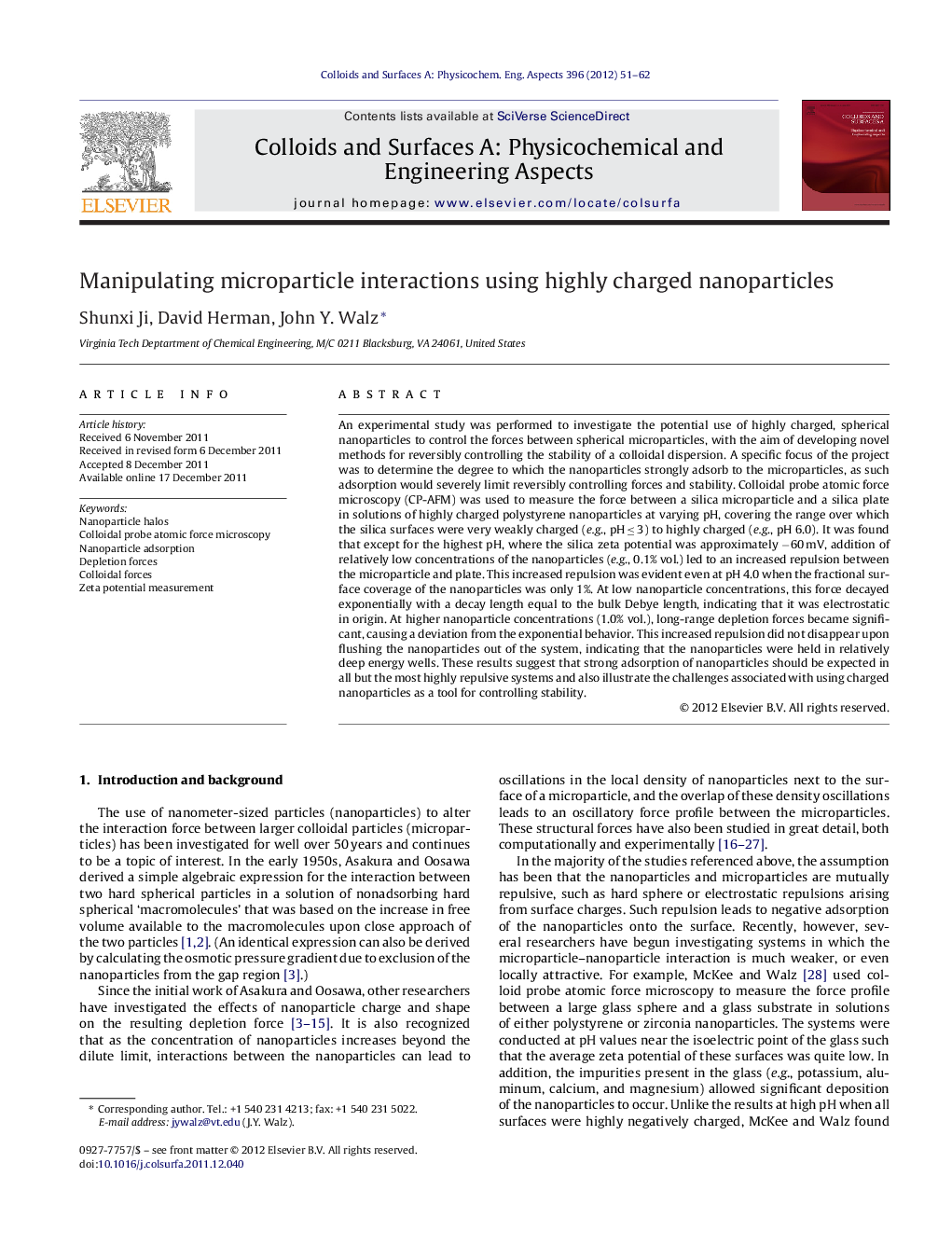| کد مقاله | کد نشریه | سال انتشار | مقاله انگلیسی | نسخه تمام متن |
|---|---|---|---|---|
| 594287 | 1453977 | 2012 | 12 صفحه PDF | دانلود رایگان |

An experimental study was performed to investigate the potential use of highly charged, spherical nanoparticles to control the forces between spherical microparticles, with the aim of developing novel methods for reversibly controlling the stability of a colloidal dispersion. A specific focus of the project was to determine the degree to which the nanoparticles strongly adsorb to the microparticles, as such adsorption would severely limit reversibly controlling forces and stability. Colloidal probe atomic force microscopy (CP-AFM) was used to measure the force between a silica microparticle and a silica plate in solutions of highly charged polystyrene nanoparticles at varying pH, covering the range over which the silica surfaces were very weakly charged (e.g., pH ≤ 3) to highly charged (e.g., pH 6.0). It was found that except for the highest pH, where the silica zeta potential was approximately −60 mV, addition of relatively low concentrations of the nanoparticles (e.g., 0.1% vol.) led to an increased repulsion between the microparticle and plate. This increased repulsion was evident even at pH 4.0 when the fractional surface coverage of the nanoparticles was only 1%. At low nanoparticle concentrations, this force decayed exponentially with a decay length equal to the bulk Debye length, indicating that it was electrostatic in origin. At higher nanoparticle concentrations (1.0% vol.), long-range depletion forces became significant, causing a deviation from the exponential behavior. This increased repulsion did not disappear upon flushing the nanoparticles out of the system, indicating that the nanoparticles were held in relatively deep energy wells. These results suggest that strong adsorption of nanoparticles should be expected in all but the most highly repulsive systems and also illustrate the challenges associated with using charged nanoparticles as a tool for controlling stability.
Figure optionsDownload as PowerPoint slideHighlights
► Polystyrene nanoparticles adsorb to silica surfaces below pH 3.0 in 1 mM electrolyte solutions.
► Adsorption increases the electrostatic repulsive force between a silica microparticle and plate.
► Increased repulsion observed even at 1% surface coverage of the nanoparticles.
► Adsorption is not readily reversible.
► Longer-range depletion and structural forces observed as nanoparticle concentration increases.
Journal: Colloids and Surfaces A: Physicochemical and Engineering Aspects - Volume 396, 20 February 2012, Pages 51–62